The Takatori Castle Ruins: One of the 3 Great Mountain Castles of Japan
2022/04/22
When one thinks of Nara, perhaps the image that comes to mind for most people is one of a deer, the sacred animal of Nara Park that has become famous on social networking platforms for their friendly tolerance of us humans. Others may associate Nara with the very old historical Buddhist temples here that also drawn in tens of thousands of visitors a year. It’s probably fair to say that one of the last things that folks think of in association with Nara is giant mountain castles, more specifically, one of the 3 largest in the entire country, but that is exactly what was once here, and now the ruins of the castle lie hidden under the thick tree growth of Mt. Takatori in the southern end of the Nara Basin.
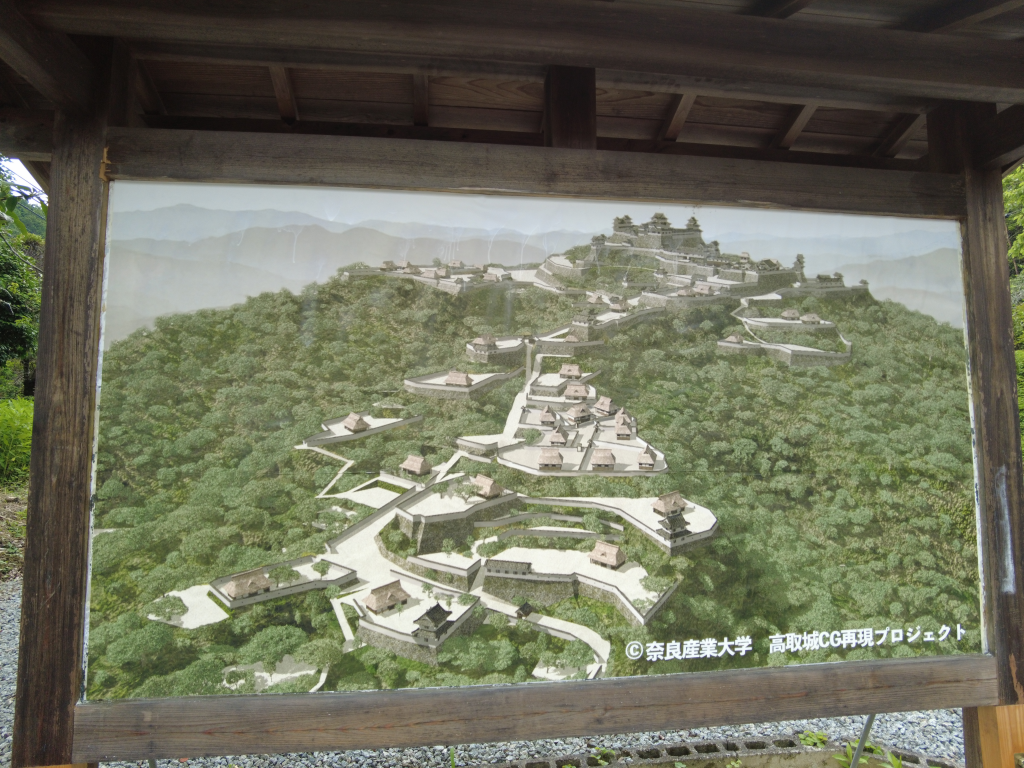
Signboard display of the original castle structure.
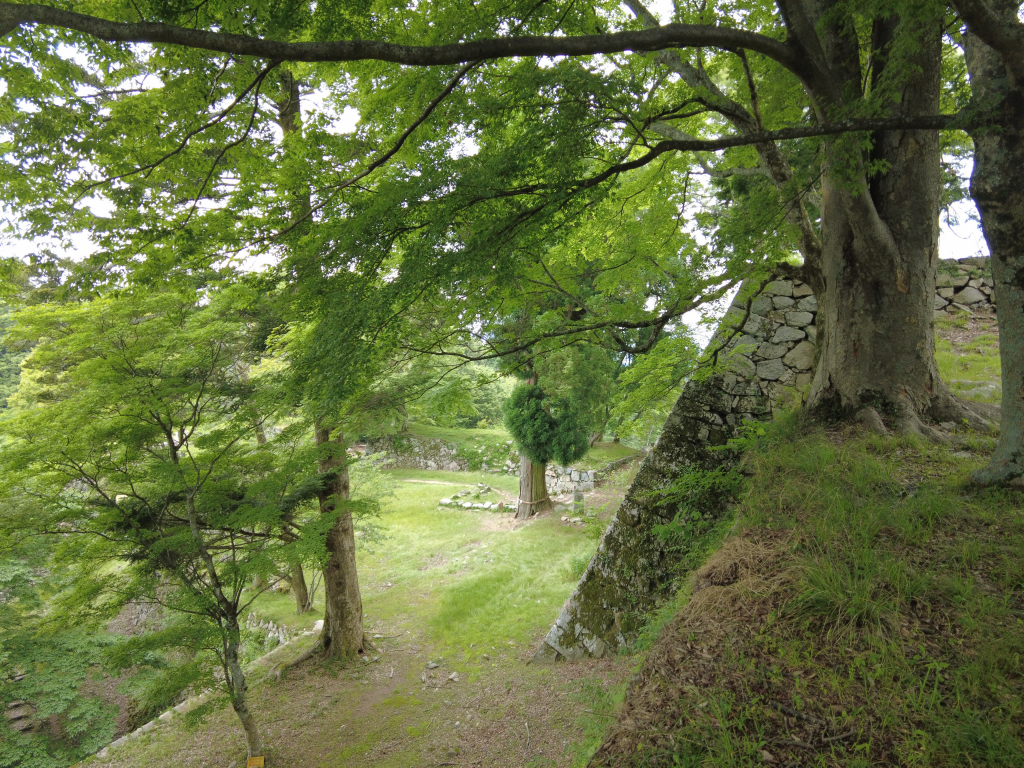
Overgrown castle ruins on Mt. Takatori.
Origins of Takatori Castle
The Takatori Castle ruins lie within the boundary of Nara Prefecture’s Takatori Town on Mt. Takatori. This town is historically famous for traditional medicine made from locally obtained ingredients. During Japan’s Nanboku-cho period (1336-1392 CE), which was defined by the clash between 2 rival Imperial Courts (the North & the South), a powerful ally of the Yoshino-based Southern Court ordered the initial construction of fortifications in the area as a way to protect against invasions from the forces of the Northern Court based in Kyoto.
In 1585 during the Sengoku Period (1457- 1615), the castle expanded under the control of the Honda Clan (itself a vassal of the powerful Toyotomi Clan) with 27 turrets and 33 gates, forming a maze of protection around Mt. Takatori and the central keep on the mountain’s peak. Among the different sections of the castle were also wells for a drinkable water supply as well as a moat of which only a small pond remains to this day.
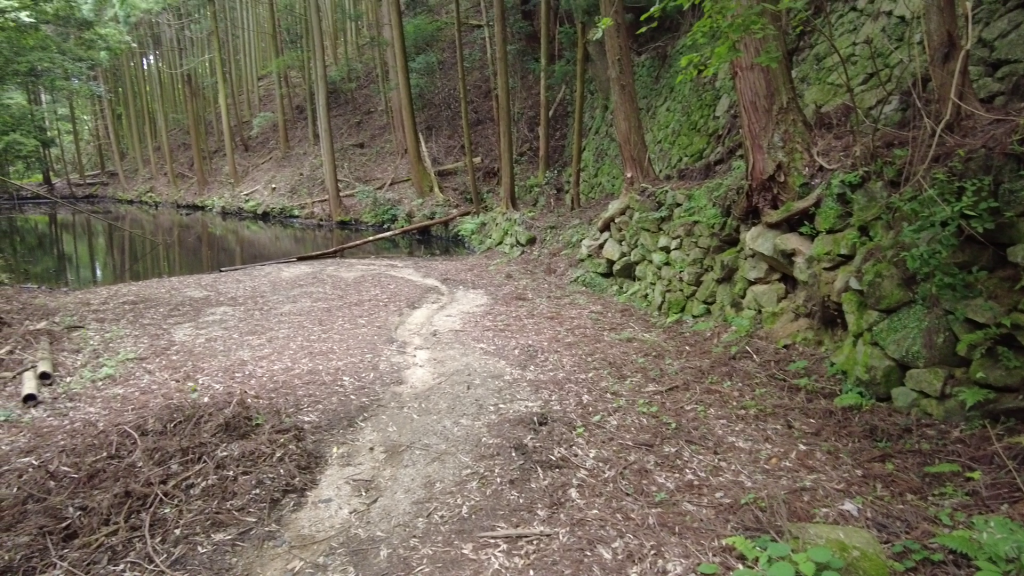
Moat location beside the hiking trail.
As might be expected for such an enormous castle, a town developed under the fortified mountain to house the samurai and other folk who were needed to to maintain it. The central street of this town, known as the “Tosa Kaido,” ran directly up to the entrance of the castle, and can still be walked along to this day. Edo period buildings still stand along the Tosa Kaido but the street itself was repaved after the Great Hanshin Earthquake, using cobblestones from the old street on the the right and left sides. It is said that no buildings along the Tosa Kaido were built higher than 1 floor so as to ensure that the local lord could not be looked down upon as they passed by.

The Tosa Kaido Street heading towards Mt. Takatori in the distance.
Nowadays the Tosa Kaido is made up of residential homes as well as shops and restaurants that see regular traffic from tourism in the area. In fact, the official hiking course up to the the Takatori Castle ruins still follows this road, but more on that in a bit.
Ownership of the castle changed hands a number of times until the Meiji period (1861 – 1912) when it was abandoned and chunks of it were auctioned off to the highest bidders to be dismantled and put to use elsewhere. By 1891, the castle had either collapsed due to disrepair or had been simply torn down. This means that although much of the stonework under the fortifications remains, the buildings themselves are long gone, and now it is home to only trees, moss, and the creatures of the forest. But all that being said, the impressively large castle walls standing amidst the forest makes for quite the sight, almost like something out of a post-apocalyptic film set. Walking amongst the ruins, there is a surreal feel to seeing the efforts of past laborers, skilled artisans, and ingenious architects all seemingly forgotten amongst overgrown ruins.

Impressive stone masonry on display
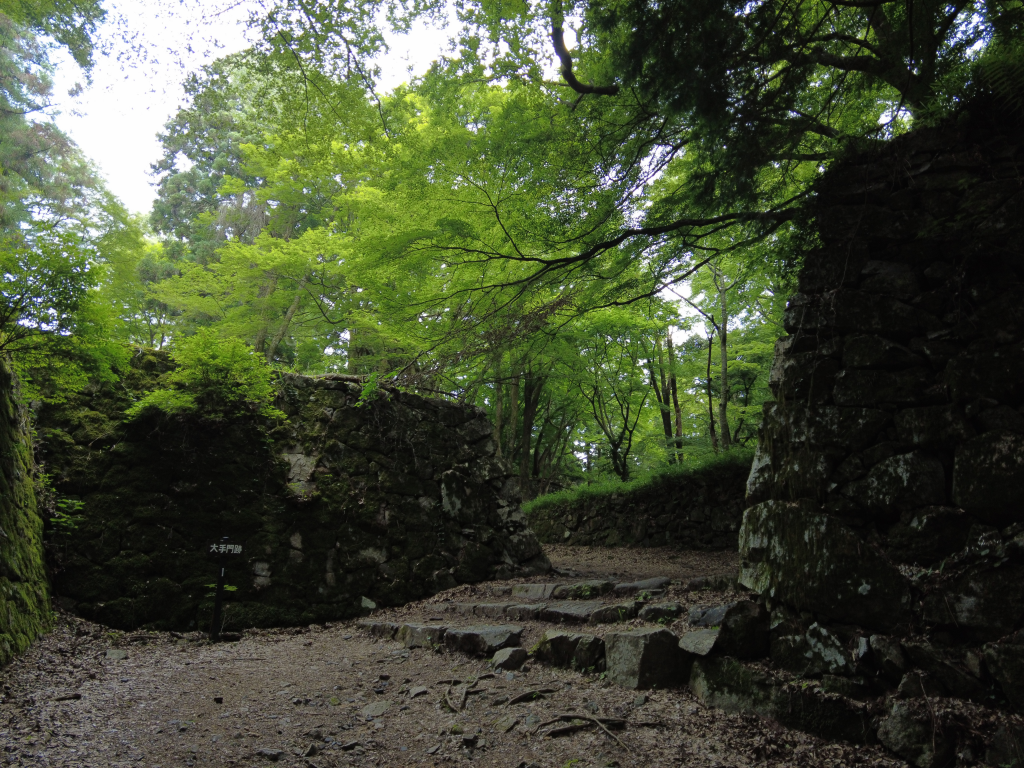
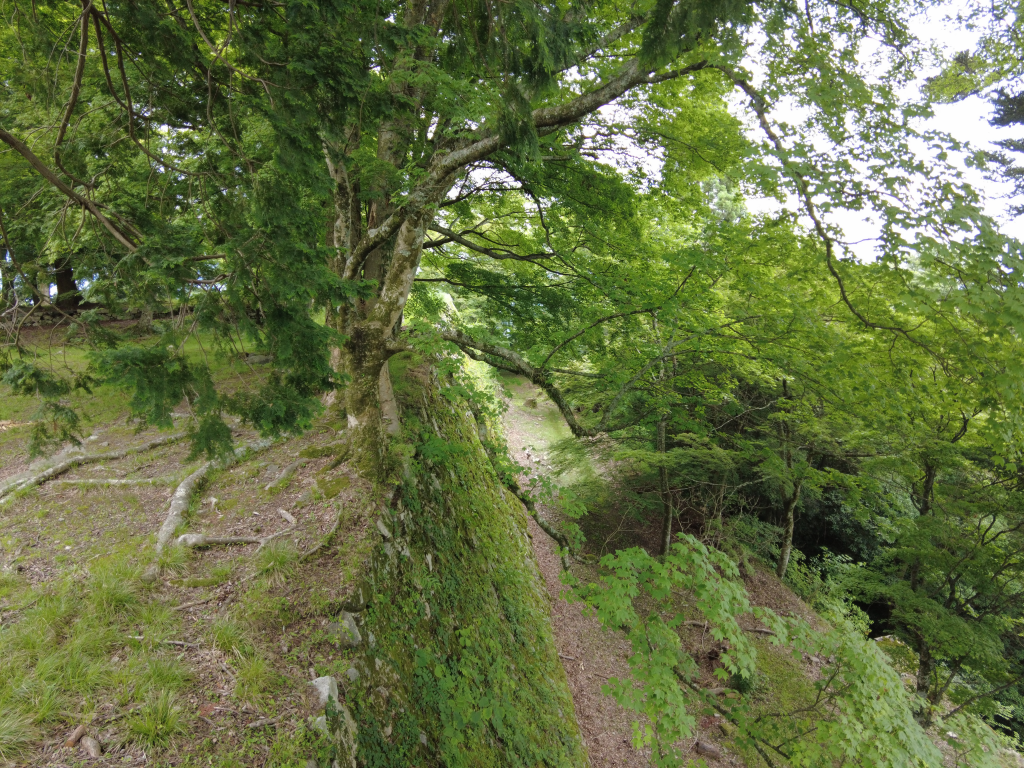
Description of the Hike
The hike itself to the top of Mt. Takatori and through the castle ruins is worth the somewhat steep climb, as it passes by through some pretty nice forest and, if you do the loop route which goes past nearby Tsubosaka Temple, some really interesting history beyond the castle ruins as well. Without a car, the easiest way to access Mt. Takatori is via Tsubosakayama Station along the Kintetsu Yoshino Line. As mentioned before, the best way to get to the trailhead is to follow the Tosa Kaido, which is just across the street and to the east from the station. Follow the Tosa Kaido as it becomes a narrow street passing through the countryside towards the mountains, eventually becoming a forest road that runs into the trailhead at about the 3KM mark, just before the road curves south to go to an isolated Buddhist temple.
From the trailhead, it is about 2.5 KM to the peak of the mountain and center of Takatori Castle. As you approach the top you will begin to see more old stone fortifications, built into the earth of mountain itself, as well as markers for different old gate checkpoints. You may also notice a curious stone statue figure about midway up that seems out of place, known as the Saru-ishi Monkey Stone.
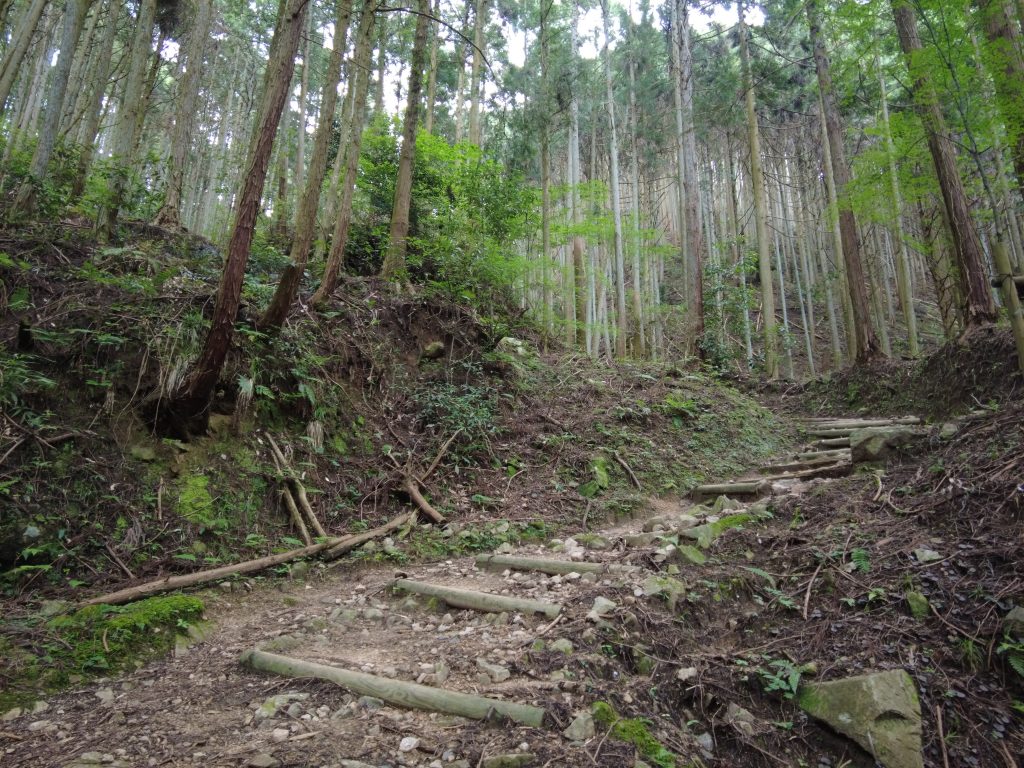
If you were looking for an explanation as to why this curious stone is in the middle of the Takatori Castle Ruins, you’d be unfortunately out of luck as nobody knows for sure. However, it is commonly thought that it was dug up long ago in a rice field in the nearby town of Asuka, along with similar Saru-ishi stones (they are called “saru ishi” because they resemble monkeys, but the intent of the designer(s) remains a mystery) , and then brought to its current position for unknown reasons.
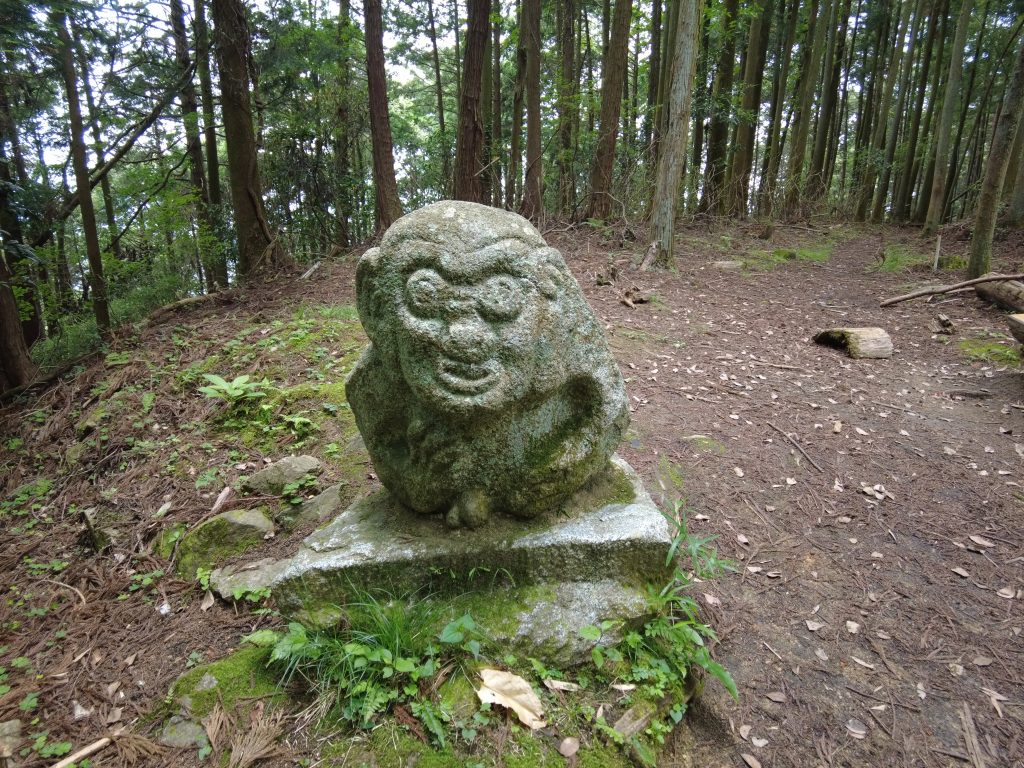
The Saru-ishi Stone
After reaching the peak, it is possible to take an alternative route down along the ridgeline to the west to Tsubosaka-dera Temple. If you take this route, you will find the mysterious 500 Arhat carvings along the trail about 1.5 KM from the peak.
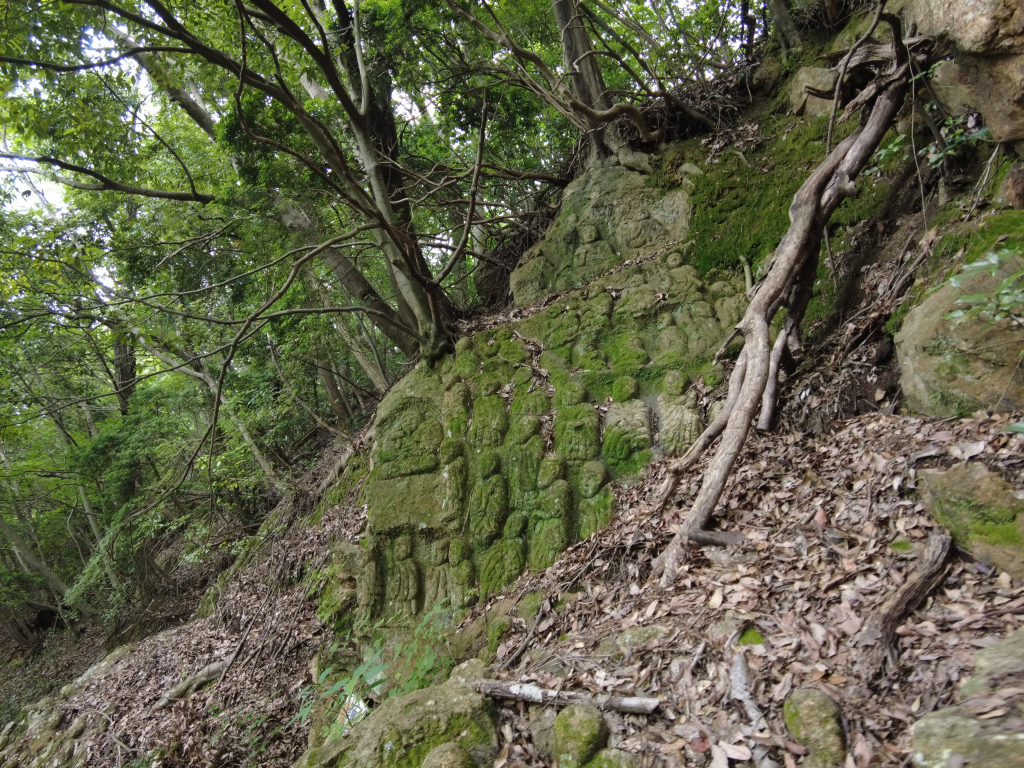
Arhat carvings
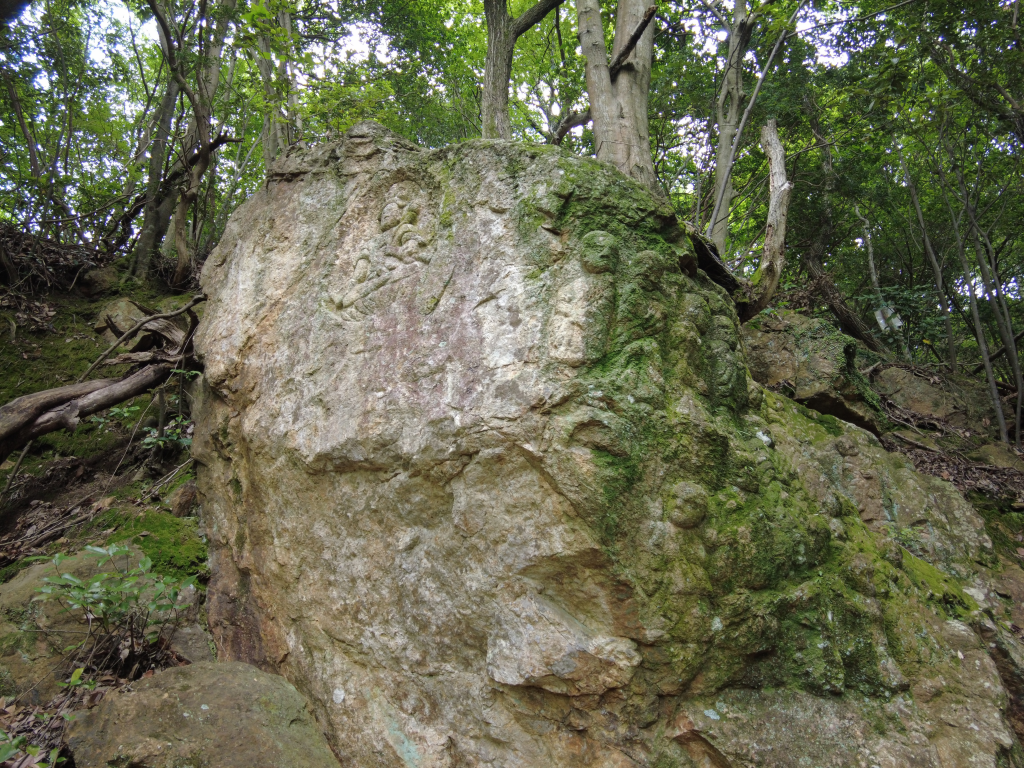
The origin of these arhat carvings, (“arhat” meaning one who has achieved the state of nirvana as taught in Buddhism), is unknown and they are rather unusual for the fact that they are literally carved into the rock of the natural mountain. Though many of the figures details have been eroded away or are moss covered and hard to make out, you can still see that each one is unique, making the work quite impressive.
Finally, if your coming down from the mountain at an early enough time in the day, you can check out Tsubosaka Temple (there is an entrance fee) which has a number of spectacular Buddhist statues and nice views overlooking the Nara Basin below. From the parking lot of Tsubosaka-dera, there is a small entrance to a trail heading down the valley back towards Takatori Town where you can make your way back to Tsubosakayama Station. Although the way back is fairly straight forward, access to a decent map or smartphone GPS is recommended for this last section.
Overall, Mt. Takatori, the Takatori Castle Ruins, and the surrounding area makes for one of the most interesting corners of Nara to visit that has something for everyone, from beautiful natural scenery to fascinating history. From my experience, this area also sees relatively fewer visitors compared to other sightseeing spots in the prefecture, so if you are also looking to get away from the crowds, this is a great place to check out.

01
FIND YOUR FAVORITE
TRIP ON OUR WEBSITE.
SEND US AN INQUIRY.

02
PERSONALIZE THE TRIP
TO YOUR INTERESTS
WITH OUR CONSULTANT.

03
20% DEPOSIT TO CONFIRM.
BALANCE PRIOR TO ARRIVAL.
PAYMENT BY CC OR TT.

04
WE WILL
MEET YOU
AT THE AIRPORT.

05
DISCOVER THE
TREASURES!